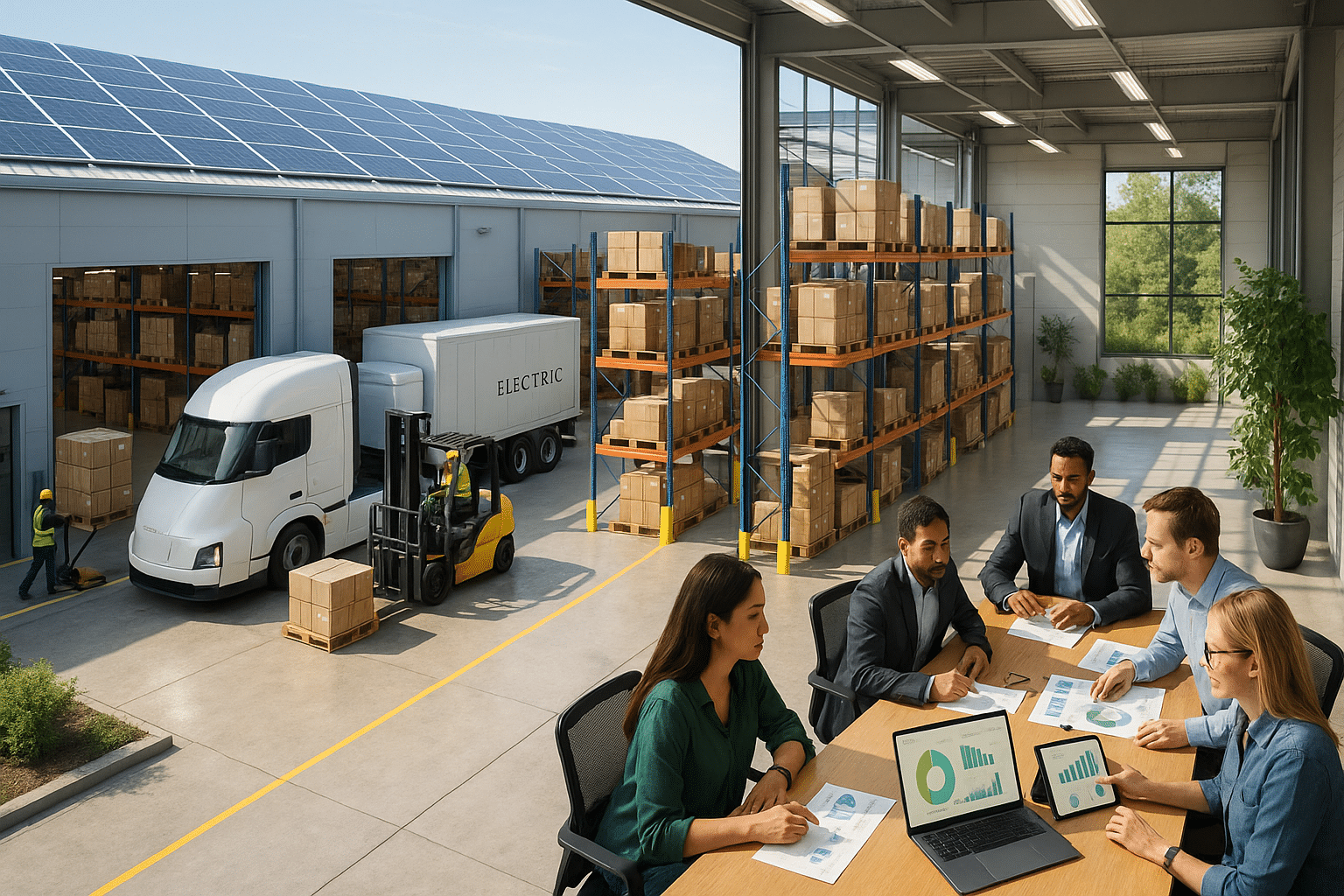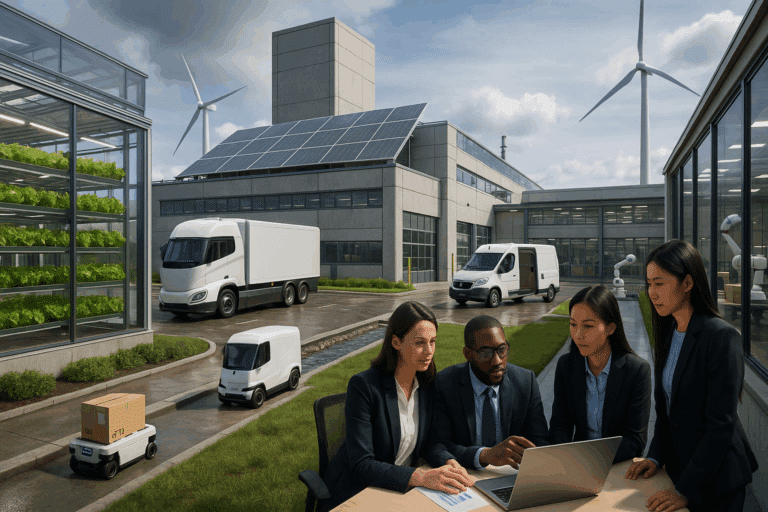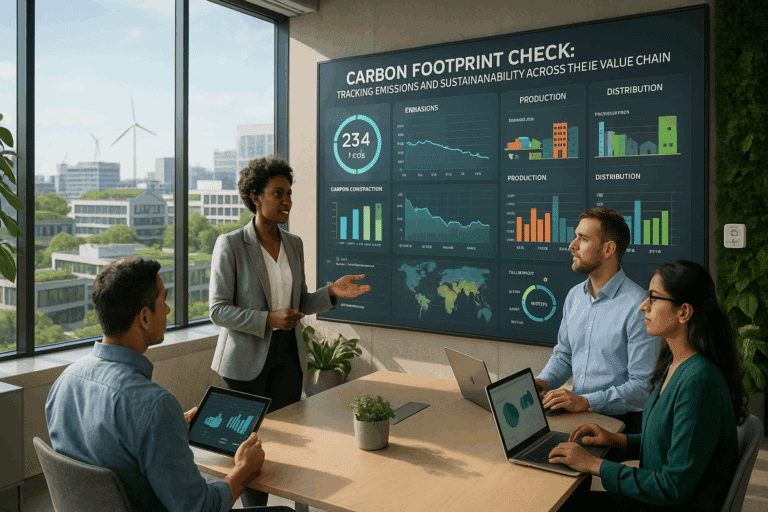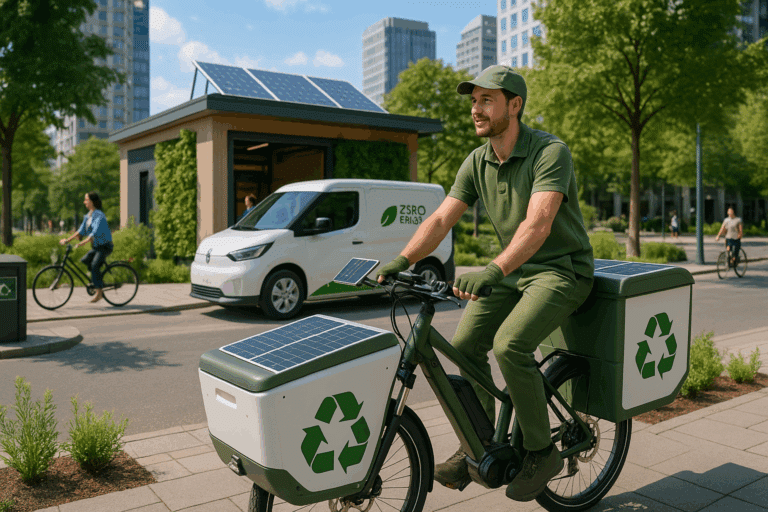Greening the supply chain is a conversation that’s gaining momentum in boardrooms across the globe. After all, a sustainable supply chain is no longer a nice-to-have, but a must-have in today’s business world. 🌍
What if I told you that a sustainable supply chain is not just about being eco-friendly but can also boost profitability and customer loyalty? That’s right, sustainable practices can lead to increased efficiency, cost savings, and improved brand reputation. But how do we move from theory to practice? How can we build a sustainable supply chain that not only benefits the planet but also the bottom line? That’s exactly what we’ll be diving into in this detailed guide.📚
We’ll first start by deconstructing the idea of a “green” or sustainable supply chain. We’ll explore what it truly means, the role it plays in the larger context of sustainable development, and why it’s become an absolute necessity in today’s climate-conscious world. ☘️
Next, we’ll delve into the key components of a sustainable supply chain. We’ll unpack the various elements that you need to consider – from sourcing and manufacturing, to distribution, and waste management. We’ll also look at the role of technology and data in building a green supply chain. 🧩
But let’s face it, transforming your supply chain won’t happen overnight. It’s a complex process that requires a strategic approach, commitment, and patience. That’s why we’ll be discussing practical steps on how to initiate this transition, overcome potential challenges, and ensure long-term success. We’ll highlight real-life case studies of businesses that have successfully greened their supply chain and the lessons that we can learn from them. 🚀
Finally, we’ll discuss the future of supply chain sustainability. As technology continues to evolve and the need for sustainable practices becomes even more pressing, what does the future hold for green supply chains? We’ll explore the emerging trends and innovations that are set to shape the future of supply chain sustainability. 🌈
Whether you’re a supply chain manager looking to make your operations more sustainable, a business leader keen to drive sustainable growth, or simply someone interested in the intersection of business and sustainability, this guide has got you covered. So, let’s get started on this journey towards building a sustainable supply chain for a better future. 🚀
Grab your favorite beverage ☕, settle into your most comfortable chair, and let’s take a deep dive into the world of sustainable supply chains. Let’s unlock the secret to balancing profitability with environmental responsibility, and start building a future where business and nature thrive in harmony. 🌿
Setting the Scene: Understanding the Concept of Sustainable Supply Chains
The concept of a sustainable supply chain is more than just a trendy buzzword – it’s a strategic imperative for companies looking to thrive in a world increasingly concerned with the effects of business operations on the environment and society. But what does it actually mean to have a sustainable supply chain? And why does it matter?
In essence, a sustainable supply chain aims to minimize its negative impacts on the environment, economy, and society, while maximizing positive value for all stakeholders involved. This includes factors such as reducing waste, promoting fair labor practices, minimizing carbon footprints, and ensuring responsible sourcing and consumption practices. The importance of these initiatives is increasingly recognized by both businesses and consumers alike, leading to a new era of corporate responsibility and consumer activism.
As more companies recognize the need to transform their supply chains, the question becomes: how can we create a sustainable supply chain? In this article, we’ll explore the key steps and strategies involved in building a sustainable supply chain, and how these practices can contribute to a better future for everyone. Let’s dive in!
Step 1: Assessing Your Current Supply Chain
The first step in building a sustainable supply chain is understanding where you currently stand. This requires a comprehensive assessment of your existing supply chain operations to identify areas of potential improvement and risk. Key factors to consider include the environmental impact of your operations, the social responsibility of your suppliers, and the economic viability of your business model. The assessment should be holistic, considering all aspects of the supply chain from sourcing and production to distribution and consumption.
One valuable tool for assessing your supply chain is the Life Cycle Assessment (LCA), which examines the environmental impacts associated with all stages of a product’s life. This includes everything from the extraction of raw materials to the disposal of the product at the end of its life. The LCA can help you identify hotspots in your supply chain where interventions can have the greatest impact.
Beyond the LCA, tools such as the Supply Chain Sustainability Assessment (SCSA) can provide a more comprehensive view of your supply chain’s performance across multiple dimensions, including environmental, social, and economic factors. By using these tools, you can gain a clearer understanding of your supply chain’s current state and identify areas for improvement.
Step 2: Setting Sustainable Supply Chain Goals
Once you’ve assessed your current supply chain, the next step is to set goals for improvement. These should be SMART goals – Specific, Measurable, Achievable, Relevant, and Time-bound. They should also be aligned with your overall business strategy and reflect the values of your stakeholders.
For example, you might set goals around reducing waste, improving energy efficiency, sourcing responsibly, or promoting fair labor practices. These goals should be ambitious, but also realistic, taking into consideration the resources available and the specific context of your supply chain.
One way to set effective goals is by benchmarking against industry best practices and standards. This can provide a clear roadmap for improvement and help you prioritize your efforts. Organizations such as the Global Reporting Initiative (GRI) and the Sustainability Accounting Standards Board (SASB) offer guidelines and frameworks that can be helpful in setting your sustainability goals.
Step 3: Implementing Sustainable Supply Chain Practices
With your goals in place, the next step is to implement sustainable practices in your supply chain. This might involve changes in sourcing strategies, production processes, logistics, and end-of-life management. The key is to align these practices with your sustainability goals and ensure they contribute to the overall performance of your supply chain.
For instance, you might adopt lean manufacturing techniques to reduce waste and improve efficiency. Or you might work with your suppliers to implement responsible sourcing practices, such as using renewable or recycled materials. You might also consider strategies to reduce the carbon footprint of your logistics, such as optimizing transportation routes or switching to cleaner modes of transport.
In the end, the specific practices you adopt will depend on your goals and the specific context of your supply chain. However, regardless of the specific practices, it’s crucial to continuously monitor and evaluate their effectiveness to ensure they are contributing to your sustainability goals.
Step 4: Engaging Stakeholders in Your Sustainable Supply Chain
Building a sustainable supply chain is not just about implementing new practices – it’s also about engaging with your stakeholders to ensure they are on board with your sustainability initiatives. This includes everyone from suppliers and employees to customers and investors.
For suppliers, this might involve training programs to help them understand and implement sustainable practices. For employees, it might mean creating a culture of sustainability and encouraging them to contribute ideas for improvement. For customers, it might mean communicating your sustainability efforts and encouraging them to make more sustainable choices. And for investors, it might mean demonstrating the business value of sustainability and showing how it contributes to long-term profitability.
Engaging stakeholders in your sustainability efforts not only helps to ensure their support, but also opens up opportunities for collaboration and innovation. By working together, you can create a supply chain that is not just sustainable, but also resilient, efficient, and profitable.
Step 5: Continuous Improvement and Reporting
The final step in building a sustainable supply chain is to continuously improve and report on your progress. This involves regularly reviewing your performance against your sustainability goals and making adjustments as needed. It also involves transparently reporting on your progress to your stakeholders.
Continuous improvement is a cornerstone of sustainability. It’s about recognizing that sustainability is not a one-time effort, but an ongoing journey. It requires a commitment to learning and innovation, and a willingness to adapt and evolve as circumstances change.
Transparent reporting, on the other hand, is about accountability. It’s about showing your stakeholders that you are serious about sustainability and that you are making real progress towards your goals. It’s also about learning from your successes and failures, and sharing these lessons with others.
To help with reporting, there are several frameworks and standards available, such as the GRI and SASB mentioned earlier. These provide guidelines for reporting on various sustainability metrics and can help you communicate your progress in a credible and standardized way.
The Future of Sustainable Supply Chains
Building a sustainable supply chain is not just about doing the right thing – it’s also about doing the smart thing. It’s about recognizing that sustainability is not just a moral imperative, but also a business opportunity. It’s about understanding that sustainable supply chains are not just about minimizing negative impacts, but also about maximizing positive value.
As we look to the future, it’s clear that sustainable supply chains will play a critical role in shaping our world. They will be key to tackling pressing global challenges such as climate change, resource scarcity, and social inequality. And they will be essential for businesses looking to thrive in a world that is increasingly demanding more responsible and sustainable practices.
So, whether you’re just starting out on your sustainability journey, or you’re looking to take your efforts to the next level, remember: the journey to a sustainable supply chain is a journey worth taking. It’s a journey that will not only benefit your business, but also our planet and future generations. So, let’s get started!

Conclusion
In wrapping up this article, it is crucial to recap some of the key concepts we’ve explored, namely the evolving landscape of IT and engineering. The interplay between these two disciplines underscores a pivotal crossroads in the trajectory of technological development, manifesting in every aspect of our daily lives.
From our discussion on the latest advancements in Artificial Intelligence (AI) and Machine Learning (ML), we noted the substantial impact they have on the optimization of processes and systems. As we’ve delved into, these technologies provide an enhanced level of autonomy and efficiency, propelling industries into a new era of digital transformation.
Moreover, our exploration of cloud computing illuminated its transformative power. With its scalability, flexibility, and cost-effectiveness, it’s no wonder businesses are increasingly leveraging this technology. Yet, as we highlighted, with these benefits also come security challenges, underscoring the need for robust cybersecurity measures.
In terms of software development, we looked at the rise of Agile methodologies and DevOps culture, emphasizing their significance in promoting collaboration and rapid, high-quality delivery. Our journey through the intricacies of coding languages, including Python, Java, and C++, further underscored the diversity and dynamism inherent in the realm of software engineering.
As Rodrigo Almeida, my objective has always been to help you navigate through these complex concepts in a more comprehendible manner. The cross-disciplinary nature of IT and engineering can be intricate, but the rewards of understanding and utilizing these principles are immense.
I invite you to delve deeper into these subjects, recognizing that knowledge is power, especially in our increasingly digital world. We have a myriad of resources available for further reading, including articles on AI, ML, and cloud computing.
Remember, staying informed is not just about understanding the present; it’s about anticipating the future. By gaining a deeper comprehension of these technologies, you can equip yourself with the skills necessary to shape our digital future.
I hope you found this article insightful and useful. If you did, please feel free to share it with your colleagues and peers. It’s through sharing knowledge that we can collectively push the boundaries of technological advancement. 😊
Feel free to leave a comment below and share your thoughts, ideas, or experiences related to the topics we’ve discussed. I am excited to engage in further discussions and answer any questions you might have.
In the rapidly evolving world of technology, the key is to continuously learn, adapt, and innovate. So, let’s keep this conversation going and together, we can create a future that harnesses the full potential of IT and engineering.
Let’s get to work! 💪



